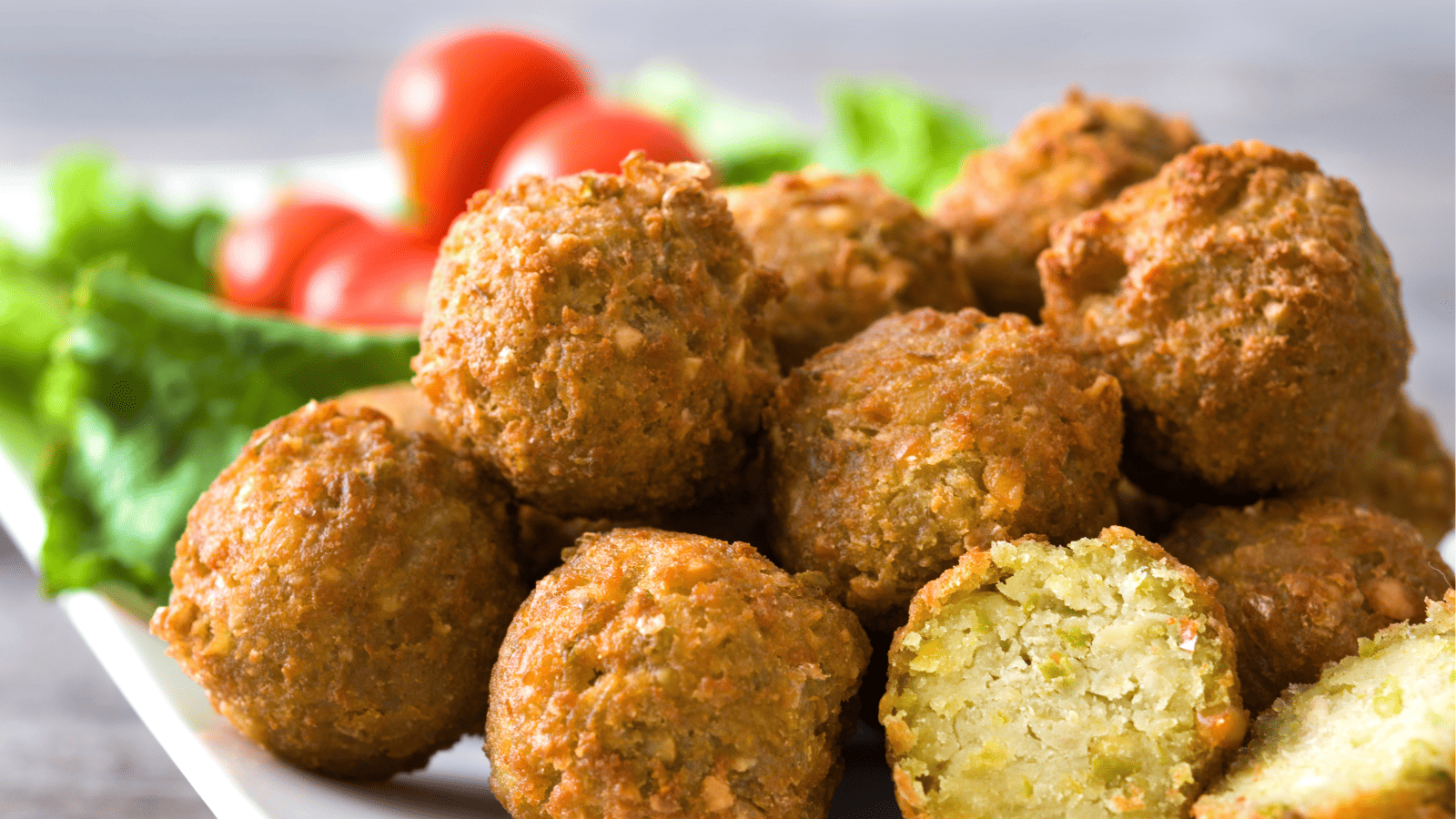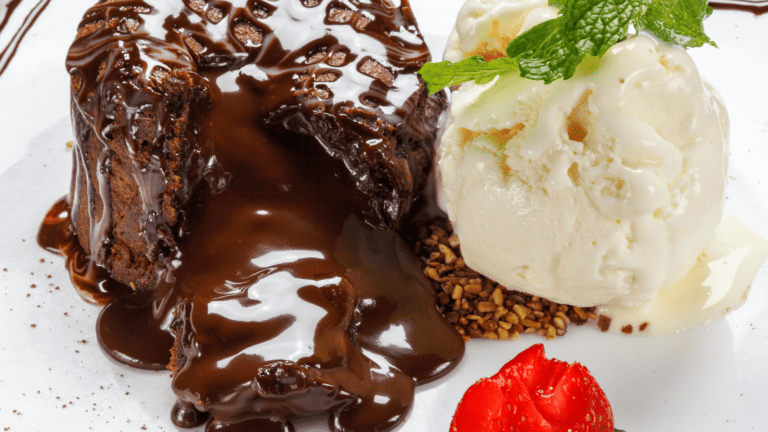Tambittu Unde: A Traditional Sweet Ladoo Recipe
Imagine indulging in a delightful treat that satisfies your sweet tooth and celebrates tradition and culture. Enter “Tambittu Unde,” a mouthwatering traditional sweet ladoo that blends the flavors of roasted gram and dry copra.
This delectable delicacy holds a special place in the hearts of many, encompassing the warmth and richness of Indian heritage. Get ready to immerse yourself in the irresistible taste and captivating history of Tambittu Unde.
What is Tambittu Unde?
Tambittu Unde is a traditional sweet delicacy from the South Indian state of Karnataka. It is a type of ladoo made using roasted gram, dry copra, and jaggery. This delicious sweet is often prepared during festive occasions and religious ceremonies.
Tambittu Unde holds significant cultural value and is known for its rich flavor and texture. It is enjoyed by people of all ages and is considered a symbol of good luck and prosperity.
Definition of Tambittu Unde
Tambittu Unde is a unique sweet made by roasting and grinding gram, grating copra, mixing it with jaggery, and shaping it into ladoos. The term “Tambittu” translates to “red” in Kannada, which refers to the reddish-brown color of the sweet.
“Unde” means “ladoo” in Kannada, the language spoken in Karnataka. It is a popular traditional sweet that is enjoyed not only in Karnataka but also in other parts of South India.
Origin of Tambittu Unde
The exact origin of Tambittu Unde is unclear, but it is believed to have originated in the southern regions of India many centuries ago. It is deeply rooted in the cultural heritage of Karnataka and is commonly associated with Kannadiga cuisine.
The recipe has been passed down through generations and has been an integral part of festive celebrations and religious rituals. Tambittu Unde is a testament to the rich culinary traditions of the region.
Ingredients Used
The ingredients used in making Tambittu Unde are simple yet essential for creating the perfect flavor and texture. They include:
- Roasted Gram: Also known as roasted chana dal, it forms the base of the ladoo and provides a nutty flavor.
- Dry Copra: Dry copra, or dry coconut, is grated and added to the mixture. It adds a subtle sweetness and a rich coconut aroma.
- Jaggery: Jaggery, a traditional unrefined sugar, sweeten the lad. It lends a distinct caramel-like flavor.
- Cardamom: Ground cardamom is added to enhance the flavor and fragrance of the sweet.
- Ghee: A small amount of ghee (clarified butter) binds the ingredients together and adds richness to the ladoo.
Traditional Preparation Method
The preparation of Tambittu Unde involves several steps to achieve the perfect balance of flavors and consistency.
Roasting and Grinding Gram
The roasted gram is first dry roasted until fragrant and then ground into a coarse powder. This step is crucial as it adds a nutty taste to the ladoo.
Grating Copra
Dry copra is grated finely to create small coconut flakes. Fresh copra can also be used, but the dry version is commonly preferred for Tambittu Unde.
Mixing with Jaggery
The roasted gram powder, grated copra, jaggery, and ground cardamom are combined in a mixing bowl. The mixture is then thoroughly mixed to ensure that all the ingredients are evenly distributed.
Shaping into Ladoos
Once the mixture is well combined, a small amount is taken and rolled into a smooth round shape, forming the ladoos. The process requires gentle pressure to create perfectly shaped Tambittu Unde.
Significance in Indian Culture
Tambittu Unde holds a special place in Indian culture, especially in the southern regions of India. It is not just deliciously sweet but is also steeped in traditions and customs. Here are some aspects of its cultural significance:
Religious Festivals
Tambittu Unde is an integral part of religious festivals celebrated in Karnataka and other states of South India. It is commonly prepared during festivals such as Makar Sankranti, Navratri, Ganesh Chaturthi, Pongal, and Diwali. It is considered an offering to the deities and is often prepared by devotees as a form of devotion and gratitude.
Marriage and Festive Celebrations
Tambittu Unde is also a popular sweet served during weddings and other festive celebrations. It is often included in the menu as a traditional delicacy that adds a touch of cultural authenticity to the festivities.
The ladoos are not only enjoyed by the guests but are also exchanged as gifts between families.
Symbol of Good Luck
In many homes, Tambittu Unde is considered a symbol of good luck and prosperity. It is believed that consuming this sweet will bring happiness and success to the family. During auspicious occasions, it is often made in large quantities and distributed to friends, family, and neighbors to spread good fortune.
Offerings to Deities
During religious rituals, Tambittu Unde is frequently offered in temples and households. The ladoos are placed before the deities as a sign of devotion and reverence. The homemade delicacy is believed to please the gods and goddesses, and blessings are sought in return.
Health Benefits
While Tambittu Unde is primarily enjoyed for its taste and cultural significance, it also offers several health benefits. Here are some of the critical advantages of consuming Tambittu Unde:
Rich in Protein
Roasted gram, the primary ingredient in Tambittu Unde, is an excellent source of plant-based protein. It provides essential amino acids and promotes muscle growth and repair. Incorporating this sweet into your diet can be a tasty way to increase your protein intake.
Good Source of Energy
The combination of roasted gram, copra, and jaggery provides a quick and sustained energy source. This makes Tambittu Unde an ideal snack for those needing an instant pick-me-up or for individuals engaging in physical activities.
Boosts Immune System
Essential nutrients, vitamins, and minerals in Tambittu Unde help boost the immune system. The combination of roasted gram, copra, and jaggery provides antioxidants and other beneficial compounds that contribute to overall wellness and immunity.
Enhances Digestion
Jaggery, a key ingredient in Tambittu Unde, is known for its digestive properties. It aids in digestion and helps prevent constipation. Furthermore, the fiber content in roasted gram helps maintain a healthy digestive system.
Variations of Tambittu Unde
While the traditional recipe for Tambittu Unde remains popular, several variations of this sweet delicacy exist. These variations involve adding different ingredients and flavors to create unique tastes. Here are some common variations:
Addition of Dry Fruits
Various dry fruits are often added to enhance the texture and flavor of Tambittu Unde. Chopped almonds, cashews, raisins, and pistachios are some popular choices. These additions provide additional crunch and a burst of nutty flavors.
Inclusion of Spices
In some variations of Tambittu Unde, spices such as nutmeg, cinnamon, and cloves are added. These spices lend a warm and aromatic touch to the ladoos, enhancing their overall taste and aroma.
Using Different Sweeteners
While jaggery is the traditional sweetener used in Tambittu Unde, some variations use other natural sweeteners such as honey or palm sugar. These alternatives offer a distinct flavor profile and can cater to different dietary preferences.
Prevalence in Different Regions
Tambittu Unde is not limited to Karnataka alone but is enjoyed in various states of South India. Here are some regions where the sweet holds prevalence:
Karnataka
Tambittu Unde is deeply rooted in the cultural fabric of Karnataka. It is a popular sweet prepared and relished in households across the state. Whether in urban areas or rural villages, Tambittu Unde is integral to celebrations and festive occasions.
Tamil Nadu
In neighboring Tamil Nadu, Tambittu Unde is known as “Paruppu Unde” and is prepared during festivals, weddings, and other auspicious events. Although the name may differ, the essence and flavors remain similar to its Karnataka counterpart.
Maharashtra
In Maharashtra, Tambittu Unde is known as “Til Ladoo” and is especially popular during the festival of Makar Sankranti. It is made using a similar recipe but with sesame seeds, jaggery, and roasted peanuts. The ladoos are exchanged as a sign of goodwill and shared with loved ones.
Andhra Pradesh
In Andhra Pradesh, Tambittu Unde is called “Nuvvula Laddu.” It is a commonly prepared sweet during festivals, particularly during Sankranti and Diwali. The recipe incorporates sesame seeds, jaggery, and roasted peanuts, giving it a unique flavor.
Kerala
In Kerala, Tambittu Unde is known as “Nadan Unda.” It is popular during Onam, the harvest festival of the state. The traditional preparation method and key ingredients remain similar to the Karnataka version, making it a cherished delicacy among the Keralite community.
Cultural Significance
Tambittu Unde holds immense cultural significance within the communities where it is prepared and enjoyed. Here are some aspects of its cultural significance:
Traditional Offering
Tambittu Unde is often a special offering to deities during religious ceremonies and festivals. It symbolizes devotion and gratitude towards the gods and goddesses. The sweet is believed to be a favorite of various deities and is considered a promising offering.
Gifts and Presents
During festive occasions and weddings, Tambittu Unde is exchanged as a gesture of joy and celebration. Families prepare a large batch of these ladoos and distribute them to friends, family, and neighbors.
By sharing this traditional delicacy, people strengthen their bonds and spread the happiness associated with the sweet.
Customs and Rituals
Tambittu Unde is integral to many customs and rituals in South Indian communities. For example, during a baby shower ceremony called “Seemantham,” Tambittu Unde is prepared and offered to the expectant mother and guests. It is believed to bring good luck and blessings to both the mother and the baby.
Tambittu Unde Festivals
Tambittu Unde is prominently associated with specific festivals celebrated in South India. Here are some festivals during which Tambittu Unde holds significance:
Makar Sankranti
Makar Sankranti, also known as Pongal in Tamil Nadu, is a festival that celebrates the sun’s transition into the zodiac sign of Capricorn. Tambittu Unde is essential to the festivities, symbolizing abundance and prosperity. It is made and distributed among friends and family to share the joy of the festival.
Navratri
Hindus celebrate the victory of good over evil during the nine-day Navratri festival. Tambittu Unde is often prepared as an offering to Goddess Durga and her nine manifestations. It is a way to seek blessings and show gratitude for the strength and protection provided by the goddess.
Ganesh Chaturthi
Ganesh Chaturthi commemorates the birth of Lord Ganesha, the elephant-headed deity of wisdom and prosperity. Tambittu Unde is considered one of Lord Ganesha’s favorite sweets and is prepared as an offering during the festival.
Devotees believe offering Tambittu Unde to Lord Ganesha brings good fortune and removes obstacles.
Pongal
Pongal is a major harvest festival celebrated in Tamil Nadu to show gratitude to the Sun God for a bountiful harvest. Tambittu Unde is a traditional sweet prepared during this festival. It is made using newly harvested rice and is offered to the Sun God as a token of thanksgiving.
Diwali
Diwali, also known as the festival of lights, is celebrated enthusiastically and joyfully across India. Tambittu Unde is integral to the Diwali festivities in Karnataka and other states. Families prepare this sweet to offer to deities and share it with loved ones during the festive season.
Tips for Making Delicious Tambittu Unde
To ensure that your Tambittu Unde turns out delicious and flavorful, here are some essential tips to keep in mind:
Choosing Quality Ingredients
Selecting high-quality ingredients is crucial for the success of your Tambittu Unde. Use freshly roasted gram, fragrant copra, and good-quality jaggery. This will ensure the flavors are well-balanced and the texture is just right.
Balancing Sweetness
Jaggery is the primary sweetener in Tambittu Unde, and its intensity can vary. Taste the jaggery before adding it to the mixture, and adjust the quantity according to your preference. Some prefer a milder sweetness, while others enjoy a more robust caramel flavor. Adjusting the sweetness level will personalize the taste of your Tambittu Unde.
Consistency of Mixture
While mixing the ingredients, ensure that the consistency of the mixture is perfect for shaping into ladoos. The mixture should come together quickly and hold its shape when rolled.
If the mix is too dry, add a small amount of ghee or warm milk to bind it together. If it is too wet, add more roasted gram or copra.
Proper Storage
To maintain the freshness and shelf life of Tambittu Unde, store it in an airtight container in a cool, dry place. This will prevent moisture from seeping in and keep the lads from becoming stale. When stored correctly, Tambittu Unde can be enjoyed for several days.
Conclusion
Tambittu Unde is not just a delightful traditional sweet, but it represents the rich cultural heritage of South India. It is a versatile and nutritious delicacy that has been cherished for generations.
The unique combination of roasted gram, dry copra, and jaggery creates a flavorful and wholesome treat. Whether enjoyed during religious festivals or shared as a gesture of goodwill, Tambittu Unde has become an integral part of the South Indian culinary landscape.
By preserving the traditions and flavors associated with Tambittu Unde, we honor the cultural significance and maintain a connection to our roots. So, the next time you savor a piece of Tambittu Unde, remember the love, traditions, and values it embodies.

Born and raised in a family of foodies, Georgia’s passion for cuisine was nurtured from a young age as she learned the intricacies of flavor and texture from her grandmother’s kitchen. As an adult, this early fascination blossomed into a full-fledged love affair with the culinary world.








